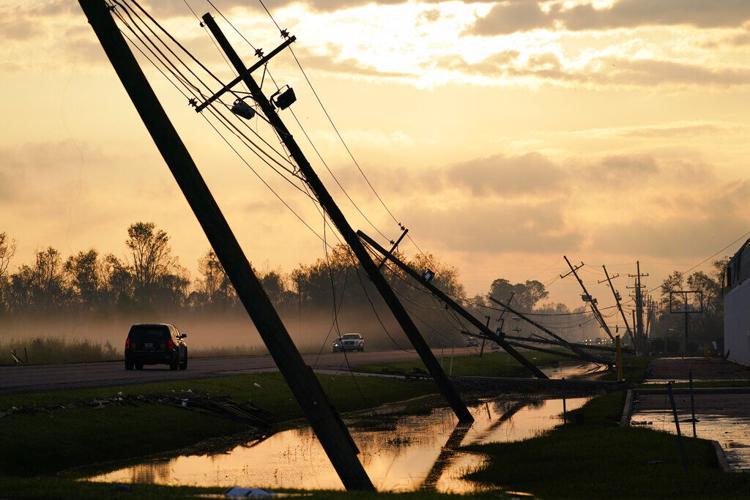The cities and states that are in the bull's-eye for hurricanes often ponder: How are they going to better prepare themselves to manage the inevitability of being hit by a massive storm? This question was constantly on my mind when I served as the chair of the Florida Public Service Commission.
In Florida, we have had our fair share of storms. Several years ago, Florida made a significant and crucial investment in making our power grid stronger and less vulnerable to storms and climate change. Those investments worked. I think Louisiana?— and especially the Louisiana Public Service Commission and the New Orleans City Council, which regulate the local electric companies?— should look to the Florida example to make its electric grid more storm resilient.
Consider the last two major storms to hit our respective regions. When Hurricane Ida hit New Orleans, despite herculean efforts by lineworkers, the electricity remained out for a significant period. In contrast, when Hurricane Ian hit the southwest coast of Florida and moved across the state, the storm caused great destruction?— but most people in the path of the storm only lost power for a few days or less. For context, Ian stands as the costliest hurricane in Florida history and the third costliest in U.S. history, while Ida stands as the sixth costliest.
Florida was able to rebound so quickly because prior to Hurricane Ian, the Florida Public Service Commission made a tough decision to invest in hardening our electric infrastructure. Those investments helped the state be more resilient to storms and quicken the pace of restoration efforts. Florida has continued to make these kinds of investments. Just last year, the state's public service commission approved four plans submitted by power companies to allow approximately $22 billion to be invested in hardening the state power grid over the next 10 years.
The Louisiana Public Service Commission and the New Orleans City Council are currently considering resilience plans from Entergy Louisiana and Entergy New Orleans, respectively. Given the increase in frequency and intensity of storms, Entergy Louisiana and Entergy New Orleans have proposed significant investments over the next decade to make their electric grids stronger to help get power back on more quickly after storms. The proposed plans include actions that have proven successful in Florida?— for example, moving overhead power lines underground and replacing wooden poles with structures that are capable of withstanding hurricane-force winds.
Of course, this grid hardening does not come for free.
With inflation and the cost of living on the rise, it’s understandable if regulators across Louisiana are hesitant to add new charges onto their customers’ power bills?— or if they may even hope that Entergy Louisiana and Entergy New Orleans can pay for all the upgrades themselves or simply resort to using federal dollars.
First, utilities cannot pay for these investments on their own; the investments are for the benefit of customers. That is why in Florida, utilities recover the costs of approved resilience plans from customers. Second, as for federal dollars, while they will hopefully provide significant cost offsets for New Orleans and Louisiana customers, at best those monies would cover only a portion of everything needed to properly harden their electric grids.
I understand firsthand how tough it is to ask customers to pay more. The district that I represented had a significant number of low-income customers. What the Louisiana Public Service Commission and the New Orleans City Council must realize is that grid hardening is critical for the state and local economy and the most vulnerable residents. After all, those individuals are least likely to be able to evacuate until power is restored after a storm. These folks, including senior citizens, are the ones who suffer the most from a vulnerable power grid. Additionally, the reduction in costs related to prolonged evacuations and material losses due to power outages can help offset the investment customers are being asked to make in grid hardening.
Without the kind of infrastructure investments proposed by Entergy Louisiana and Entergy New Orleans, there will be greater cost and longer recovery times when future storms hammer into Louisiana.
The hurricanes are not going to stop. It’s time for Louisiana to do what Florida has done?— invest in grid hardening for the good of its citizens.
Ronald Brisé is?the former chair of the Florida Public Service Commission.


